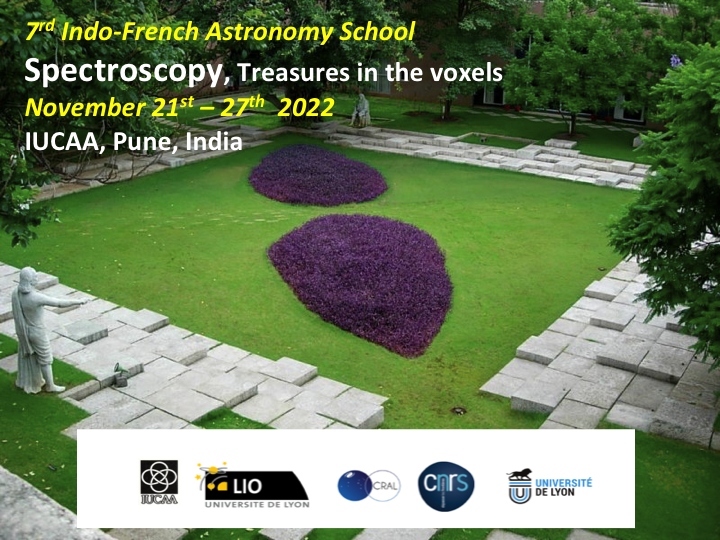
|
|
|
School description > Research projectsThe students will be separated in groups of four to five, and assigned to a research project under the supervision of an expert tutor. A total of 50 hours will be available to work on the projects. The projects will be carried-on using the students own laptops (and access to remote servers when necessary), that shall ideally be running a Linux-like environment. Prescriptions concerning the software packages to be pre-installed will be communicated before the school. The list of projects is below: 1. Stellar Spectral Classification and Interpolation Tutors: Ranjan Gupta (IUCAA, Pune) & Harinder P Singh (University of Delhi, New Delhi) 2. Chemical composition of neutral gas in a distant galaxy. Tutor: Jens-Kristian Krogager (CRAL, Lyon, France) We will study the chemical composition of the neutral gas in a distant galaxy at redshift 1.7 using absorption lines from various metal species (carbon, silicon, zinc, iron etc). Some specific absorption lines from neutral carbon atoms provide additional information about the physical conditions, like density and temperature, so we can estimate these as well. However, there are still uncertainties about the theoretical strength of these lines. One aim is to constrain the line strength ratios of these lines, for which very high spectral resolution is required. For this purpose, we will be working on data from the VLT/ESPRESSO spectrograph and comparing to previous VLT/UVES data of the same object at lower spectral resolution. Software requirements: Python, VoigtFit (python package), and/or other scripting language for preparing plots or analysing results. 3. Determination of stellar atmospheric parameters of globular cluster stars from MUSE observation Tutor: Philippe Prugniel (CRAL, Lyon, France) Description: We will derive the atmospheric parameters of stars from the globular cluster NGC6397, using spectra extracted from MUSE cubes as described in Husser et al. (2016). We will compare with the resuls obtained by the former paper, and by Jain et al. (2020). MUSE started the era of crowded-fields spectroscopy, where the whole field of a star cluster can be observed at once, to be then decomposed into individual spectra. In this way, the complete population can be observed, down to some flux limit. A star cluster is an ideal place to check the stellar evolution models, and to benchmark the different approaches foreseen to evaluate the chemical composition and physical parameters of stars. 4. Modelling a Lyman continuum leaker at z~1 from AstroSat Tutor: Kanak Saha (IUCAA, Pune) Data: Far and Near-Ultra-Violet imaging data (unpublished) from AUDF will be provided. Archival data from HST, VLT and Spitzer (downloadable). Spectroscopic data from MUSE and HST grism. Objectives: Construct a spectral energy distribution and modelling using PCIGALE/BPASS. Derive physical parameters: stellar mass, Z, dust, escape fraction. Tools/Software: Good knowledge of photometry: PSF, daophot, aperture photometry. Python with astropy, numpy, scipy. Install Pcigale with anaconda env. Candidates with knowledge of spectral analysis will be a plus. |

